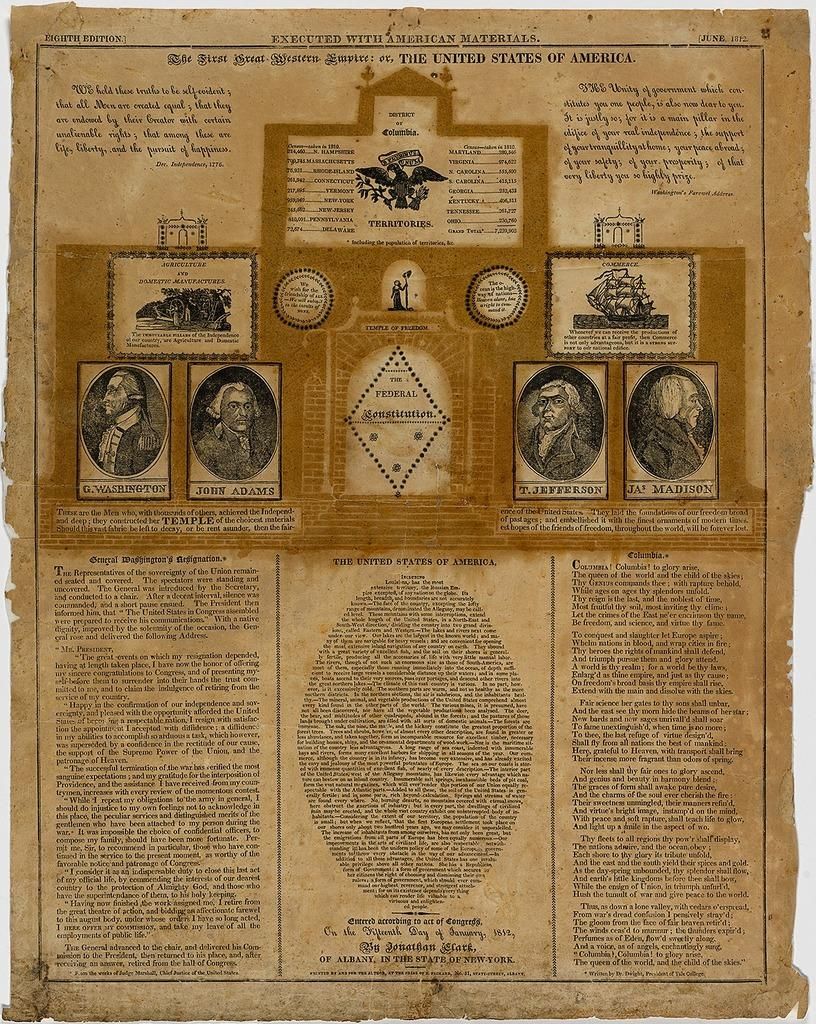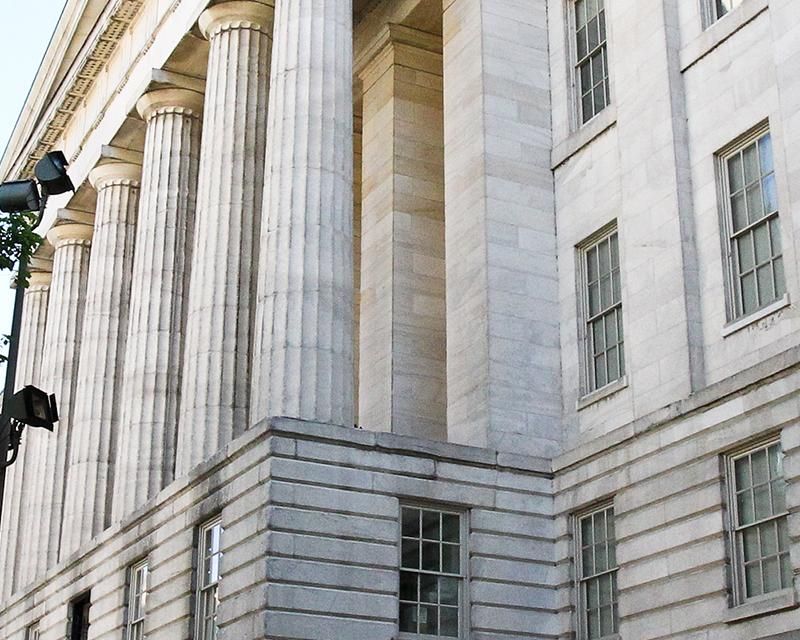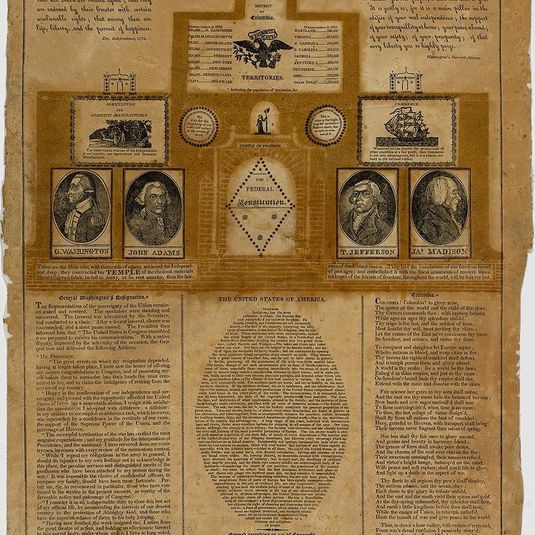
Washington to J. Q. Adams
As early as 1795, Americans regarded George Washington as the Patriae pater (father of his country). The ornate title recognized the critical role that he had in the creation of the American Republic as well as the weight of his responsibilities as the first president of the United States. Washington not only established the legitimacy of the new government but also set precedents for the scope of presidential power, including the tradition of leaving office after two terms.
Following Washington’s tenure, separate political parties emerged: the Federalist Party and the Democratic- Republican Party. State representatives—who embodied diverse regional and economic interests—viewed the duties of government through different lenses, and political rivalries among them grew fierce as they debated the reach and limits of federal power. After the Louisiana Purchase of 1803, westward expansion was inevitable, and organizing this territory into new states dominated nineteenth-century American politics. Foremost in the political situation was the crucial issue that the Founders recognized but failed to solve: the coexistence of democracy with slavery.
───────────────
The First Great Western Empire
Artist: Jonathan Clark
1812
Wood-engraving with letterpress and color woodcut on paper
Acquired through the generosity of Sidney Hart and David C. Ward
NPG.2010.98
Image and text © National Portrait Gallery, Smithsonian Institution, 2023
Where you'll find this

Smithsonian National Portrait Gallery
Permanent collection
Discover more

1789-1829: Building the Presidency
Gallery Tour: America's Presidents
•
1:30









